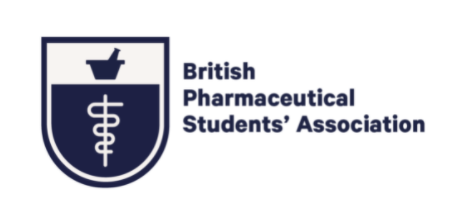Insight: Integrated Clinical Pharmacist
What a delightful journey so far - What it means to be an Integrated Clinical Pharmacist (ICP)
Temitope Asoto (Publication Author)
My career in the NHS started at University College London Hospital as a Medical Laboratory Assistant. While I was there I undertook a BTEC (Business and Technology Education Council) Certificate in Pharmaceutical Science and qualified as a pharmacy technician (PT). After a couple of years as a PT, I decided to pursue a career as a pharmacist because I wanted to specialise in an area of pharmaceutical care. Once I qualified, I worked in secondary care as a rotational and admissions pharmacist for 9 years.
I’m currently employed by Guy’s and St Thomas’ NHS Foundation Trust as an ICP for the rehabilitation team (Hospital Avoidance Team). I lead on the delivery of medicine optimisation for frail older people in a domiciliary care setting across Lambeth and Southwark. It’s a multidisciplinary team, which consists of nurses, physiotherapists, occupational therapists, rehabilitation support workers (care worker) and a geriatrician.
What is an Integrated Clinical Pharmacist?
We are new breed of pharmacists whose role is to deliver a person-centred approach to safe and effective medicine use by facilitating the coordination of patient care across providers and settings. We bridge the gap between health and social care to ensure people obtain the best possible outcomes from their medicines - Integration without care coordination cannot lead to integrated care.
Leading the delivery of medicine optimisation in integrated care
There are two main aspects to my role:
Patient facing role: undertaking clinical medication reviews for patients on the community team’s caseload who have complex medicine related problems. I work with the patients/carers to develop a care plan which achieve individual goals/outcomes from taking medicine.
Enabling role: leading the wider workforce (clinical and non-clinical) to deliver medicine optimisation through expert advice, support, training, education and developing safe processes/guidance.
NICE guidance on Medicine Optimisation NG5 recommends that medicine reconciliation (MR) should be completed for all people who have been discharged from hospital or another care setting as soon as practically possible. The guidance also indicates that it must be carried out by trained and competent healthcare professional; ideally a pharmacist, pharmacy technician, nurses or doctor. Due to demands on capacity and the operational hours of the team it’s not always possible for this to be done by the pharmacist, technician or nurse. I have therefore provided training to the wider workforce, i.e. therapists to enable them to undertake MR. I also train the care workers on medicine administration. The outcome of this change in practice meant that therapist and care worker are better equipped to identify and resolve medicine related issues and MR is completed within 24 to 48 hours of the patient being admitted into our service.
Interventions to increase adherence
NICE guidance on adherence (CG76) recommends the provision of adequate support to meet the individual patient identified adherence needs. The guidance also recommended that healthcare professional should routinely assess for non-adherence when medicine is review. My role is to identify and implement a care plan to resolve the cause of adherence, which can be divided broadly into the following 3 domains:
Access – unable to get a supply of medicine (work with local chemist and General Practice).
Practicality around taking medicines – Patient unable to take medicine ( We provide devices and work with carer).
Clinical – effectiveness, perception and beliefs (shared decision making, deprescribe by working with GP).
Medicines safety
Patients are vulnerable and at higher risk of medicine related error during transfer of care therefore it is important to have a robust process to prevent potential adverse drug events. Part of my role is to identify, report and share learning from medicines-related patient safety incidents.
My challenges
Integrating into the team and changing mind sets - this is crucial to success, especially in implementing the MR process. It is important that one does not become a barrier but a problem solver within the team and be able to show benefits and value as well as engage with all stakeholders.
Autonomy and lone working – as mentioned above one pharmacist spread across two teams can be lonely and one must be able to make autonomous decision as well as carrying out domiciliary visit as a lone worker
Slow and steady (change of pace) – in the secondary care setting the care givers and decision makers are within reach (doctor, consultant, clinic etc.). In primary care coordination of care is across multiple settings usually not in the same building, location or borough in some cases. This impact on how quickly one can implement a care plan and resolve pharmaceutical issues.
My advice for students is that the sky is not the limit
Your primary care service needs your skills and expertise and there are real opportunities to champion innovative work designed around patient centred outcome.

